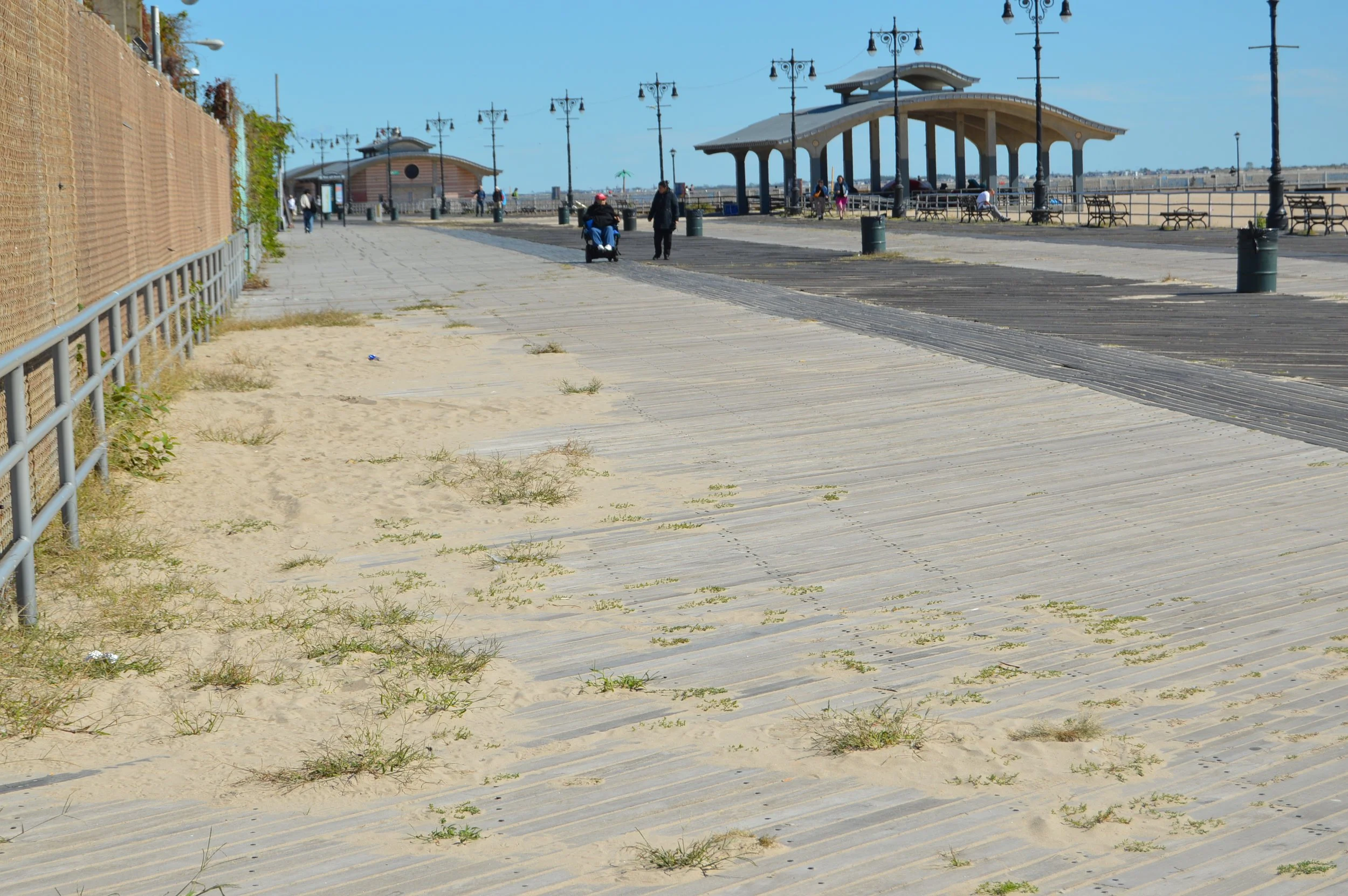Parks and Open Space
Coney Island encompasses approximately 273 acres—or 11.9 million square feet—of parks and open space, offering significant potential for community recreation and ecological benefits. However, much of this space is underfunded and poorly maintained, limiting its usability and appeal. While the iconic boardwalk is a centerpiece of the area, many residents do not view it as "their own” open space, since it’s often crowded with thousands of visitors. This disconnect leaves locals longing for accessible, community-centered spaces that provide a sense of ownership and exclusivity.
Concerns about inadequate maintenance, limited access to facilities, and years of neglect have left many of Coney Island’s parks feeling disconnected from the community they are meant to serve. Beyond issues of upkeep, residents feel a lack of meaningful connection to these spaces because they are not designed for everyday park activities. Outdated playgrounds, the absence of dog parks, and a shortage of seating areas make it difficult for families, pet owners, and neighbors to use the parks as places to gather, play, or relax. This has created a growing sense of frustration among community members, who are seeking parks that reflect their needs and foster a sense of pride in their neighborhood.
The Boardwalk
The Boardwalk, particularly the sections where residents access the beach and amusement district, is currently undergoing restoration after years of neglect. However, progress has been slow, with deadlines repeatedly pushed back due to shifting priorities and a shortage of skilled professionals needed for the work. This delay has further frustrated residents, who rely on the Boardwalk as a critical connection to both recreational and cultural amenities in the area.
Source: Courtney Knapp
Kaiser Park
Kaiser Park, one of the larger and more prominent green spaces in Coney Island, recently received $10 million in funding through Council Member Justin Brannan. This funding represents a significant step toward revitalizing the area, but it also highlights the park's longstanding challenges. Poor waterfront maintenance has made portions of the park inaccessible and unsafe for subsistence fishing, diminishing its appeal and limiting its potential as a destination for recreation. Additionally, the park suffers from a lack of seating and thoughtful landscaping, which prevents visitors from fully enjoying its vast area and scenic views of the waterfront.
While the funding for Kaiser Park offers hope for positive change, many residents believe there is still a need for broader, neighborhood-wide improvements to green spaces. Thoughtful redesigns that include updated playgrounds, well-maintained walking paths, shaded seating, and spaces for community interaction could transform parks across Coney Island into vibrant, welcoming places. For a community that feels increasingly detached from its open spaces, investing in these improvements is essential to creating parks that are both functional and cherished by residents.
Source: Jasmin Malhotra



